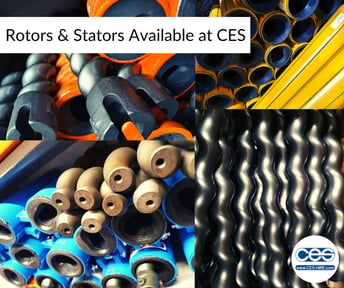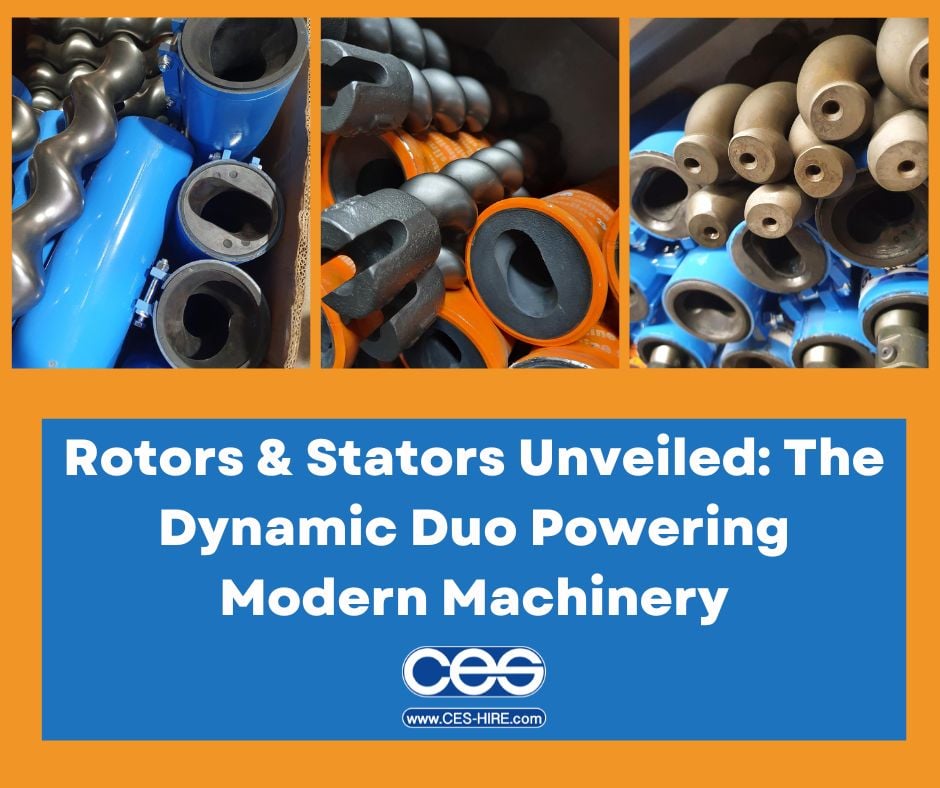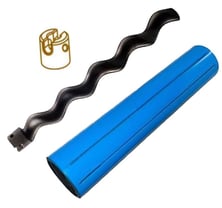Machine Maintenance
Rotors & Stators Unveiled: The Dynamic Duo Powering Modern Machinery
When it comes to selecting the right rotor and stator for your machine, the options can be overwhelming. With so many choices available, it's important to match the correct rotor and stator to your pump, considering factors such as material and aggregate size, as well as speed and pumping pressure. If you're unsure which rotor and stator is right for you, don't hesitate to give us a call at 01494 715472. We're here to help. In the meantime, continue reading for more information on the world of rotors and stators.
How Does a Rotor & Stator Work?
The rotor and stator mechanism is the driving force behind many of our machines. Whether you're working with render, plaster, grout, or liquid flow screed, the product is directed through the rotor and stator by a cardan or mixing shaft. The spiralled steel shaft, known as the rotor, rotates inside the stator, which is the rubber-lined stationary component. This rotation creates conveying chambers that move in the direction of flow, allowing for a continuous flow that pushes the material through the hose and onto the surface. It's crucial to select the right rotor and stator, as they vary in terms of speed and pumping/spraying output. You can find a range of rotors and stators in our online shop.
Which Rotor and Stator is right for my Machine?
To determine which rotor and stator fits your machine, start by checking the product spec/data sheet. Generally, the size of the rotor and stator corresponds to the size of the machine. For example, larger rotors and stators like the 2L6+++ are designed for big diesel machines, capable of handling larger aggregate sizes and offering greater material output. On the other hand, smaller rotors and stators are compatible with smaller aggregate materials and achieve lower material output.
Why Do they Come in Different Sizes?
Rotors and stators come in different sizes and shapes for various reasons:
 1. To cope with different materials
1. To cope with different materials
2. To pump at different pressures
3. To pump at varying speeds
4. To allow for more control
5. Personal preference when working
6. To handle larger jobs
Rotor and stator data sheets often specify a standard speed of 400RPM. Renderers generally have a preferred rotor and stator that allows them to work at their desired speed while maintaining control over the render's drying time and finishing process. Experienced renderers may even be able to work with faster rotors and stators while remaining in control. The intricacies of the job can also impact rotor and stator selection. For example, a block of flats with many windows may require more control than a large flat warehouse wall. When using render, it's important to consider the time it takes for the product to dry and whether you'll be scraping the same day or the following day. Liquid flow screed, on the other hand, is pumped at a much faster speed, as it sets within 30 minutes to an hour, requiring quick and uniform filling of the space.
Size is an important factor when it comes to rotor and stator selection. While larger rotors and stators generally fit larger machines, it's not just the length and width that matter. The pitch, or ridges, on the rotor also influence pumping speed and pressure. Rotors with more or deeper pitches pump at higher pressures. Greater pressure may be necessary when pumping over longer distances, through more hose, or when spraying at greater heights. Conversely, rotors with shallower pitches produce lower pressure, as the material slides through more easily with fewer ridges to navigate. The shore, or firmness, of the stator is another consideration. A higher number indicates a firmer inner tubing, and a softer stator is often recommended for coarser materials.
What if I Select the Wrong Rotor and Stator?
While some machines can accommodate multiple rotors and stators, allowing for versatility in handling different materials, it's crucial not to fit the wrong rotor and stator to your machine. Using the incorrect part can cause serious damage. Pumping a material with aggregate that is too large for the rotor and stator can potentially cause a blockage. Failing to address a blocked machine promptly and wash it out can lead to further problems and expensive repairs. Additionally, using the wrong rotor and stator with a different product can result in excessive wear on the moving parts. Larger aggregate pushing through a smaller rotor and stator causes significant wear, and since these parts are expensive to replace, it's best to avoid having to replace them after every job.
For more information on rotors and stators specifically for rendering pumps, check out our blog.




